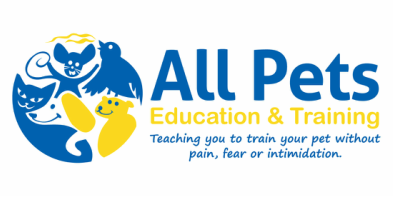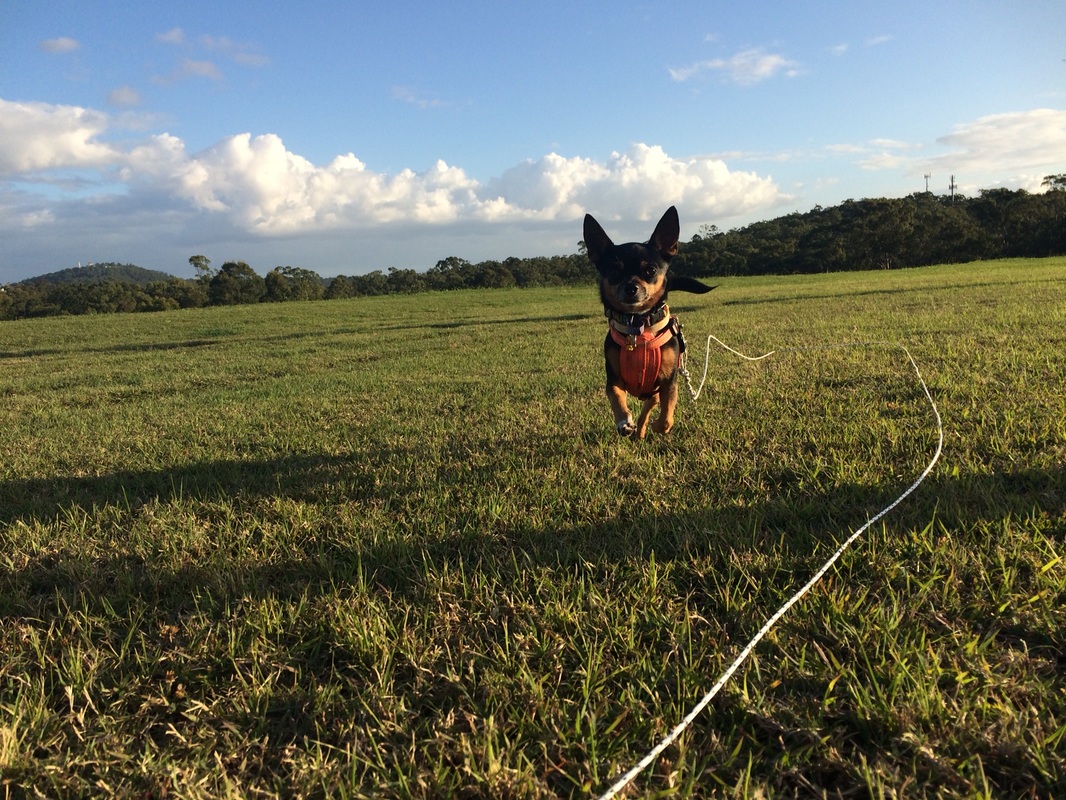Making and Using a Longline
Using
a longline (longer than average leash) gives your dog a little more freedom,
whilst still being safe and secure.
Using this can help with training the steps to have a dog off leash, and
practice behaviours at a distance.
Longlines come in many lengths (right up to 20m). I prefer mine to be around 6m long. This gives your dog extra room to move, whilst still keeping the dog close enough to avoid unwanted incidents.
When choosing a longline, make sure it is strong enough for your dog, but light weight enough that it won’t annoy them with drag. The longline I made below is for my Chihuahua, who weighs in at 3kg, and the traditional longlines are just too heavy.
When using a longline, remember to look around you. Take note of how close you are to roads, trees, other people and dogs. Injuries and entanglements can occur if not used correctly.
Only use the longline if the clip is fitted to a back attach harness. This will minimize the risk of neck injuries should your dog reach the end of the leash at speed.
Aim to keep the lead loose, so that the dog doesn’t get reinforced for a tight leash by moving forward. Pay (feed a yummy treat, or play with a favourite toy) when your dog checks in with you. Feed the line out as the dog moves away from you, and reel it back in (loose lead for your dog) as they approach you. You will need to be paying close attention for this to work. We don’t want the lead to tangle your dog up or any one or thing around you.
Longlines come in many lengths (right up to 20m). I prefer mine to be around 6m long. This gives your dog extra room to move, whilst still keeping the dog close enough to avoid unwanted incidents.
When choosing a longline, make sure it is strong enough for your dog, but light weight enough that it won’t annoy them with drag. The longline I made below is for my Chihuahua, who weighs in at 3kg, and the traditional longlines are just too heavy.
When using a longline, remember to look around you. Take note of how close you are to roads, trees, other people and dogs. Injuries and entanglements can occur if not used correctly.
Only use the longline if the clip is fitted to a back attach harness. This will minimize the risk of neck injuries should your dog reach the end of the leash at speed.
Aim to keep the lead loose, so that the dog doesn’t get reinforced for a tight leash by moving forward. Pay (feed a yummy treat, or play with a favourite toy) when your dog checks in with you. Feed the line out as the dog moves away from you, and reel it back in (loose lead for your dog) as they approach you. You will need to be paying close attention for this to work. We don’t want the lead to tangle your dog up or any one or thing around you.
|
Making
a long line
What you need: Dog Clip (can buy or use one from an unwanted lead – mine came from a retractable lead). Rope/Cord Scissors A way to seal the end of the rope. |
|
|
Step 1:
Cut the cord to 50cm longer than your desired finished length. Step 2: Seal the ends of the cord to prevent fraying. My cord is nylon, so I used a flame to melt the end and then ran it under cold water to cool it and make for easier handling. |
|
|
Step 3:
Pick one end of the rope, and slip your dog clip on to it. Fold the cord over at about the 25-30cm mark. |
|
|
Step 4:
Use a figure 8 knot. Make this knot as close to the dog clip as possible. Ensure your knot is smooth and pull tight. |
|
|
Step 5:
Finish this end using the short segment of cord to make a double fishermans knot (or two) |
|
|
Step 6:
Make a handle at the other end of your rope. Fold the cord over about 25-30cm. Step 7: Repeat steps 4&5 (not using a dog clip). Make a handle loop suitable to your wrist size. Your leash is ready to use. |
|

